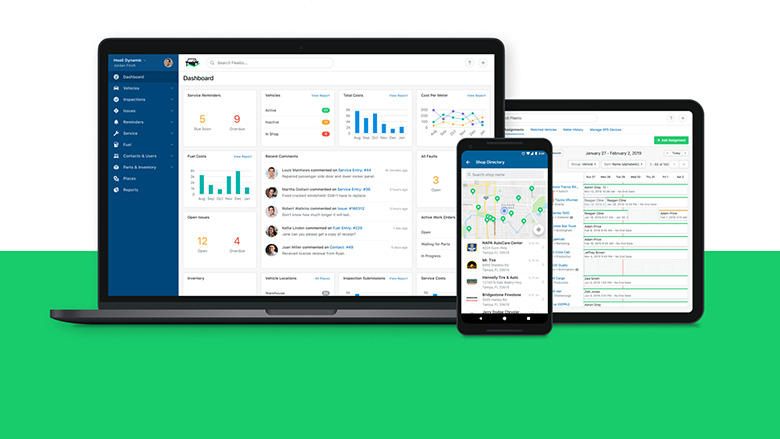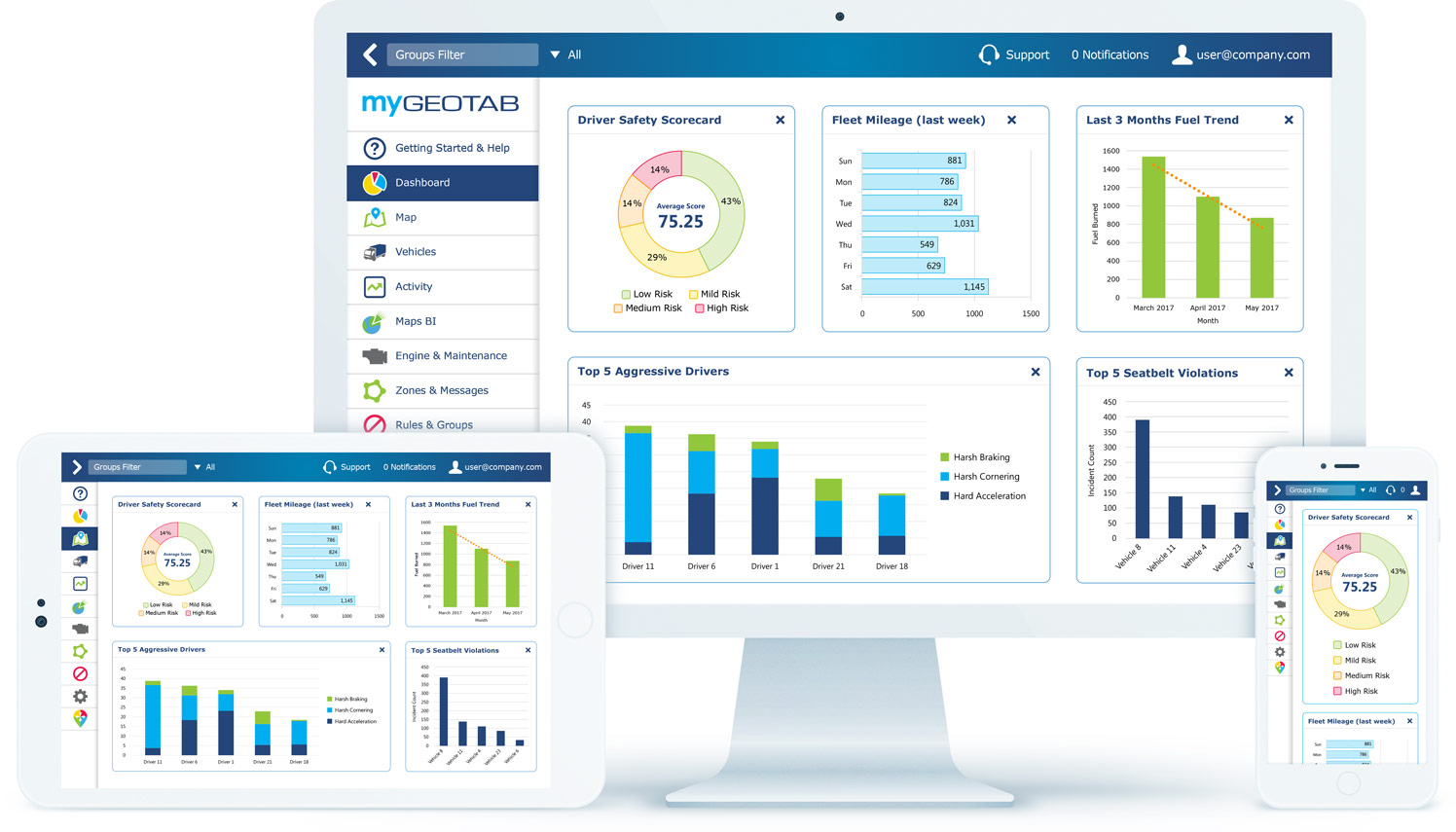Maximize Your Fleet's Efficiency Through Ingenious Administration Software Application
In the dynamic landscape of fleet management, the function of ingenious administration software program can not be overstated. By harnessing the power of sophisticated technology, companies can move their fleets in the direction of optimal performance levels. These software application solutions use a suite of devices designed to simplify operations, maximize courses, and improve general efficiency. The true influence of such systems prolongs past mere functional improvement. Via a strategic combination of monitoring software, organizations can open a world of opportunities that go far beyond standard fleet administration techniques.
Advantages of Administration Software Program
Fleet management software supplies a range of benefits that improve operations and enhance performance for organizations of all dimensions. One vital advantage is enhanced productivity through enhanced routes and timetables. By making use of GPS monitoring and real-time data, managers can efficiently designate tasks, display progression, and make quick adjustments as required. This leads to lowered downtime, enhanced delivery times, and eventually, boosted client satisfaction.
Moreover, fleet administration software helps companies cut costs dramatically. By analyzing gas usage, automobile maintenance needs, and vehicle driver actions, business can identify locations for enhancement and apply approaches to decrease costs. This data-driven approach results in much better decision-making, eventually conserving cash over time.

Real-Time Lorry Tracking
With the raising need for enhanced performance and cost-saving procedures in fleet operations, real-time car tracking has become an essential tool for businesses intending to enhance their logistical processes effectively. Real-time car monitoring utilizes GPS technology to provide real-time location information of each automobile in a fleet. This technology makes it possible for fleet managers to keep track of courses, track gas intake, and guarantee prompt deliveries. By having real-time presence into their fleet, businesses can make informed choices to enhance efficiency, lower idle time, and enhance consumer complete satisfaction.
In addition, real-time vehicle monitoring enables proactive upkeep scheduling based on real car usage, resulting in reduced downtime and lower upkeep prices. In the event of unexpected delays or route discrepancies, managers can promptly reroute cars to decrease interruptions and fulfill distribution due dates. Additionally, the data collected through real-time tracking can be examined to determine patterns and fads, enabling continuous optimization of fleet procedures. Generally, integrating real-time automobile monitoring into fleet monitoring practices can cause significant operational improvements and price savings for businesses.
Path Optimization Attributes
Efficient course optimization plays an important duty in simplifying fleet operations try this website and optimizing performance. Route optimization features integrated right into fleet management software use sophisticated formulas to determine the most effective routes for lorries to comply with. By taking into consideration factors such as traffic problems, roadway closures, and optimal distribution home windows, these tools assist fleet managers minimize fuel costs, lessen lorry deterioration, and enhance overall operational efficiency.
Through real-time data updates and predictive analytics, path optimization functions allow fleets to adapt to altering conditions on the roadway quickly. This agility causes enhanced client contentment with on-time deliveries and enhanced service levels. Furthermore, by reducing unneeded mileage and still time, fleet supervisors can reduce their carbon impact and add to ecological sustainability efforts.
Cost Effectiveness Solutions
Making best use of functional price efficiency in fleet monitoring exceeds course optimization and encompasses a variety of calculated solutions to maximize funds and drive sustainable growth. One crucial price performance solution is the application of predictive upkeep software application. By using data analytics and device understanding algorithms, fleet managers click for source can proactively set up maintenance based on real car conditions, minimizing downtime and preventing pricey unexpected break downs.
Additionally, adopting fuel monitoring systems can significantly affect expense effectiveness. These systems keep an eye on gas usage in real-time, determine inefficiencies, and recommend methods to boost fuel economic climate. By maximizing fuel use, fleets can minimize overall functional prices and decrease their environmental footprint.
An additional essential cost-saving procedure is leveraging telematics technology. Telematics remedies offer valuable understandings right into vehicle driver habits, lorry performance, and path performance. By examining this data, fleet managers can make enlightened choices to improve procedures, boost performance, and ultimately lower costs.
Improving Fleet Security
Enhancing the safety and security criteria within fleet operations is vital for guaranteeing chauffeur wellness and decreasing the danger of accidents - fleet management tools. Applying innovative telematics systems can considerably add to enhancing fleet safety. These systems give real-time surveillance of chauffeur behavior, such as speeding, extreme braking, and irregular driving, enabling fleet managers to step in promptly and provide essential training to motorists. Additionally, incorporating driver fatigue monitoring technology can help prevent accidents triggered by sluggish driving, boosting overall security.
Routine upkeep and inspections are also crucial components in guaranteeing fleet safety and security. Applying a proactive maintenance routine can aid recognize and resolve potential problems prior to they escalate into security threats. Utilizing anticipating maintenance software can aid in forecasting maintenance needs based upon car information, decreasing the possibility of unanticipated malfunctions that could jeopardize security.
Furthermore, buying motorist training programs concentrated on protective driving methods and safety methods can infuse a safety-conscious culture within the fleet. By focusing on security actions and leveraging technology-driven services, fleet supervisors can efficiently boost safety and security standards and safeguard both motorists and assets.
Conclusion
